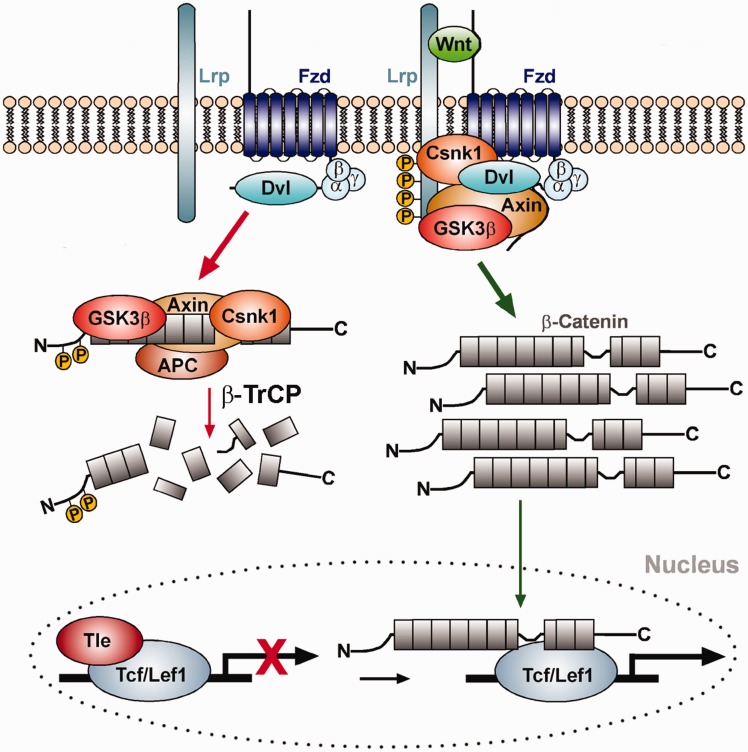Figure 5.
The Wnt/β-catenin signaling pathway. Left (red arrows): In the absence of Wnt ligand, β-catenin is bound by the destruction complex consisting of the scaffolding proteins Axin and Adenomatosis polyposis coli (APC), and the protein kinases Glycogen synthase kinase 3 beta (GSK3β) and Casein kinase I (Csnk1), and sequentially phosphorylated by these kinases. Phosphorylated β-catenin binds to and is ubiquitinated by the E3 ubiquitin ligase β-TrCP, thereby targeting it for proteasomal degradation. In the absence of Wnt ligand, lymphoid enhancer binding factor 1 (Lef1) or T cell-specific (TCF) transcription factors are bound to the promoters of Wnt target genes in the cell nucleus together with co-repressors of the Groucho/transducin-like enhancer of split (Tle) family proteins, thereby repressing their expression. Right (green arrows): On binding of Wnt ligand to the Frizzled (Fzd) receptor and low-density lipoprotein receptor-related protein (Lrp) co-receptor complex, Axin and GSK3β are recruited to the cell membrane via Dishevelled (Dvl) and the destruction complex falls apart. Unphosphorylated β-catenin accumulates in the cytosol and translocates into the nucleus, where it binds to the Lef1/TCF transcription factors and activates Wnt target genes by displacing the co-repressors and recruiting co-activators to this complex. Properties of Lef1/Tcf binding sites in the promoters of known Wnt target genes, i.e. the number of conserved Lef1/Tcf binding sites as well as the averaged matrix similarity, were used to train a classifier and to predict direct or indirect interactions of potentially new target genes and Lef1/Tcf transcription factors in the Wnt/β-catenin signaling pathway.

